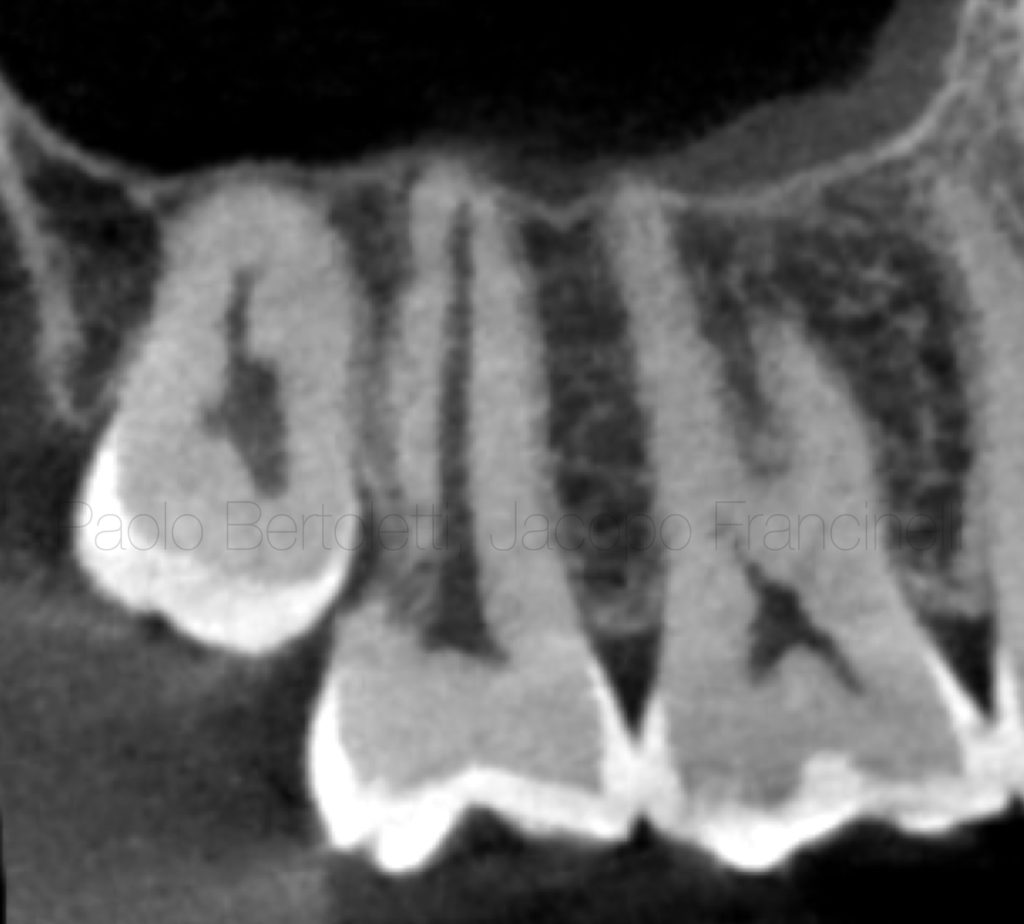
External root resorption: is intentional replantation a real option? A case report
03/12/2022
The Community
Warning: Undefined variable $post in /var/www/vhosts/styleitaliano-endodontics.org/endodontics.styleitaliano.org/wp-content/plugins/oxygen/component-framework/components/classes/code-block.class.php(133) : eval()'d code on line 2
Warning: Attempt to read property "ID" on null in /var/www/vhosts/styleitaliano-endodontics.org/endodontics.styleitaliano.org/wp-content/plugins/oxygen/component-framework/components/classes/code-block.class.php(133) : eval()'d code on line 2
External cervical resorption (ECR) is initiated on the external aspect of the root, usually apical to the epithelial attachment. It is often aggressive in nature, resulting in significant loss of tooth structure.
The purpose of this case report is to present a multidisciplinary management of ECR in a patient.
The challenge is to identify the most suitable treatment for a given patient combining evidence-based guidelines with clinical experience.
The prognosis of ECR treatment depends not only on the quality of endodontic treatment, if is necessary, but also on the used technique.
In this case the management of resorption would have been difficult due to the localization and reduced mouth opening of the patient. It was therefore decided to proceed with an extra-oral approach and then perform an interntional replantation.
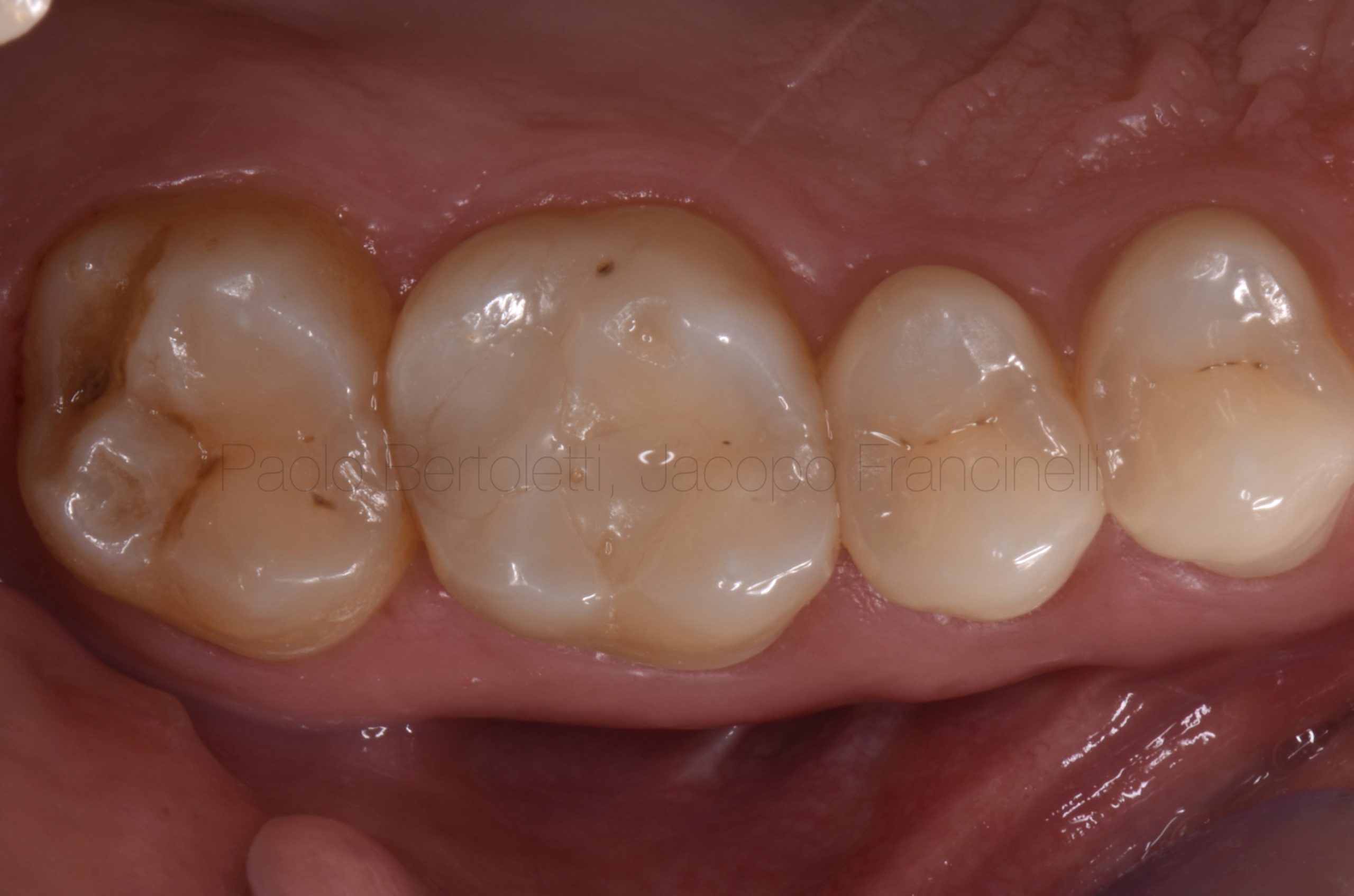
Fig. 1
Initial situation, photo
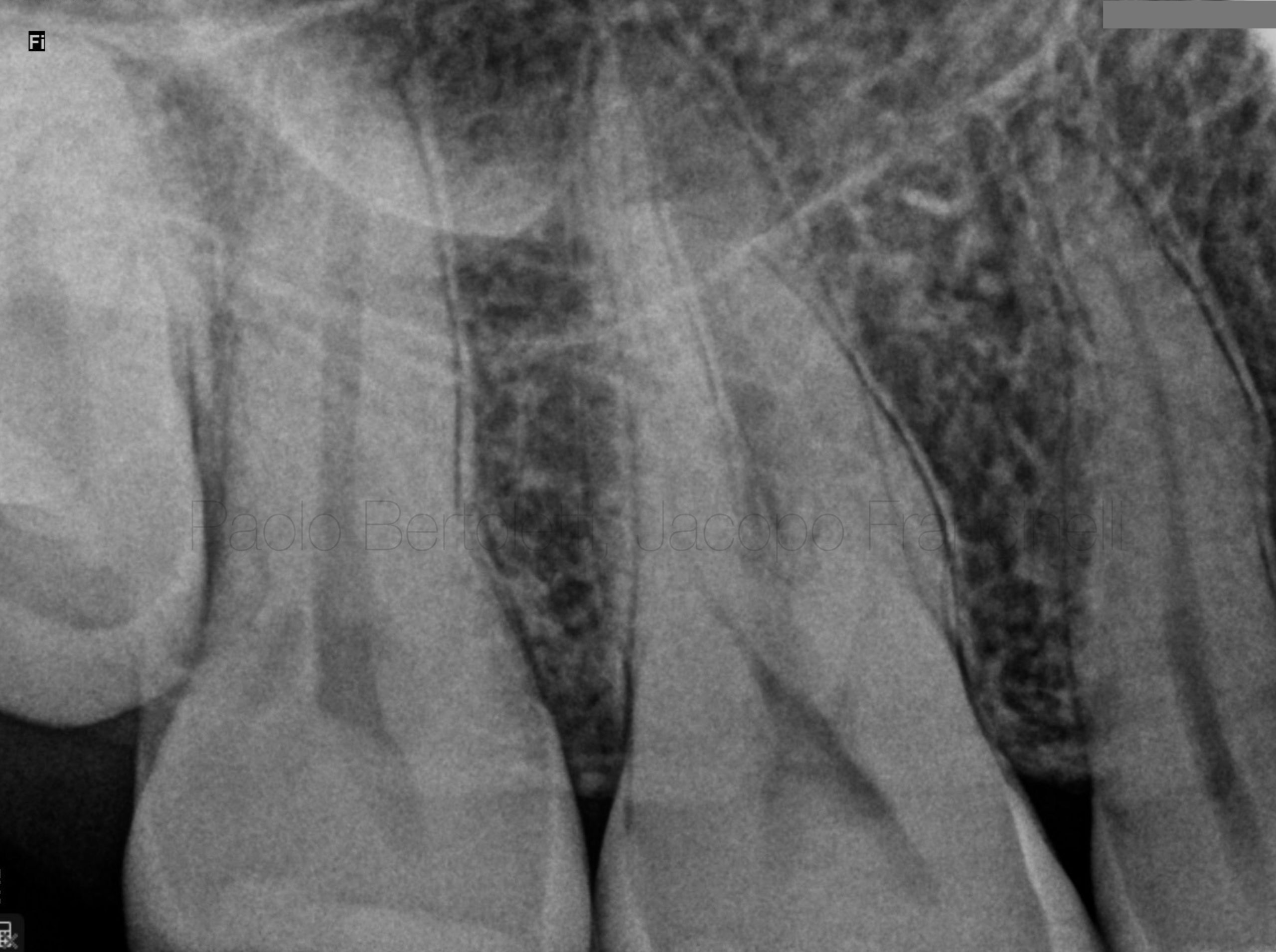
Fig. 2
Initial situation, X-Ray
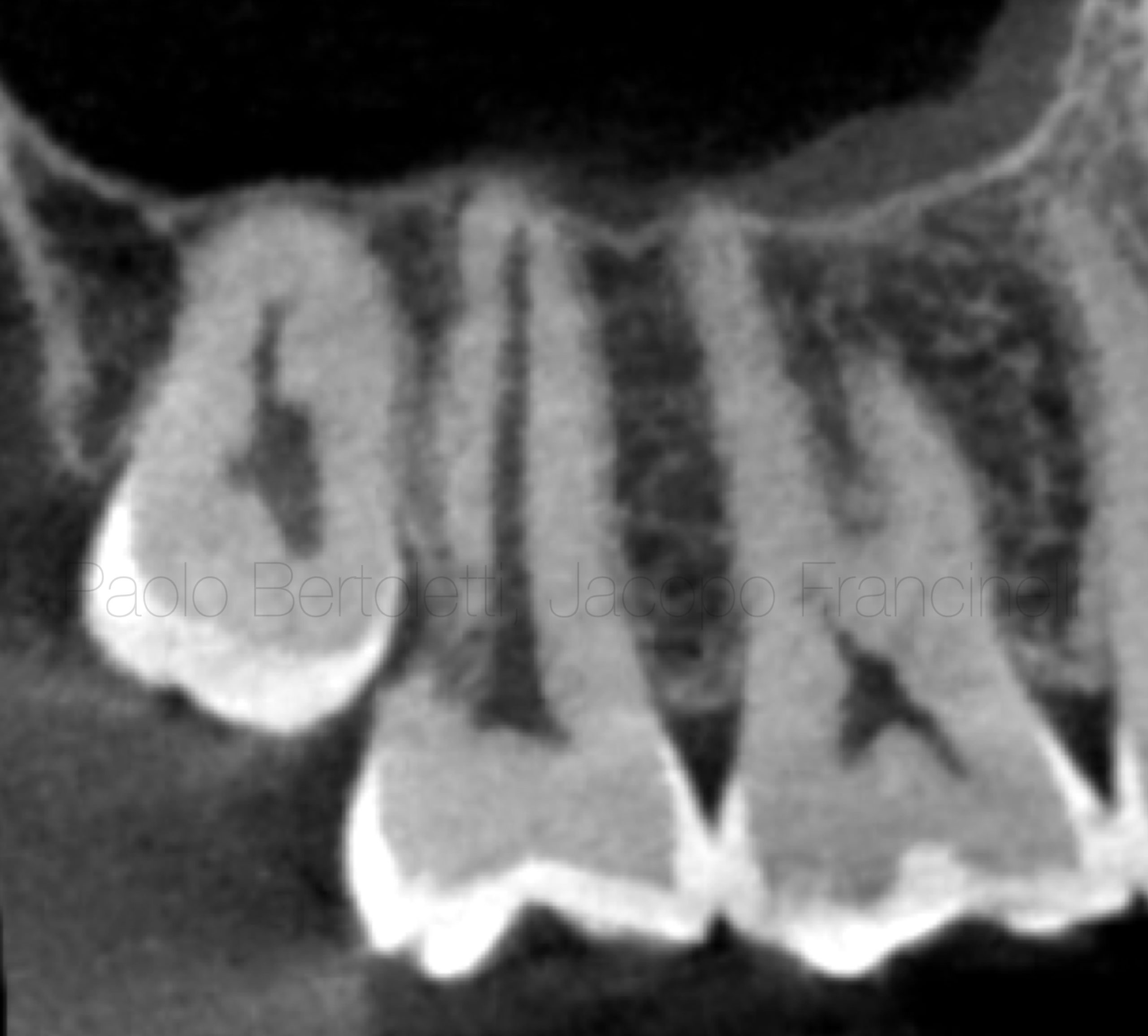
Fig. 3
Initial situation, sagittal plane, CBCT
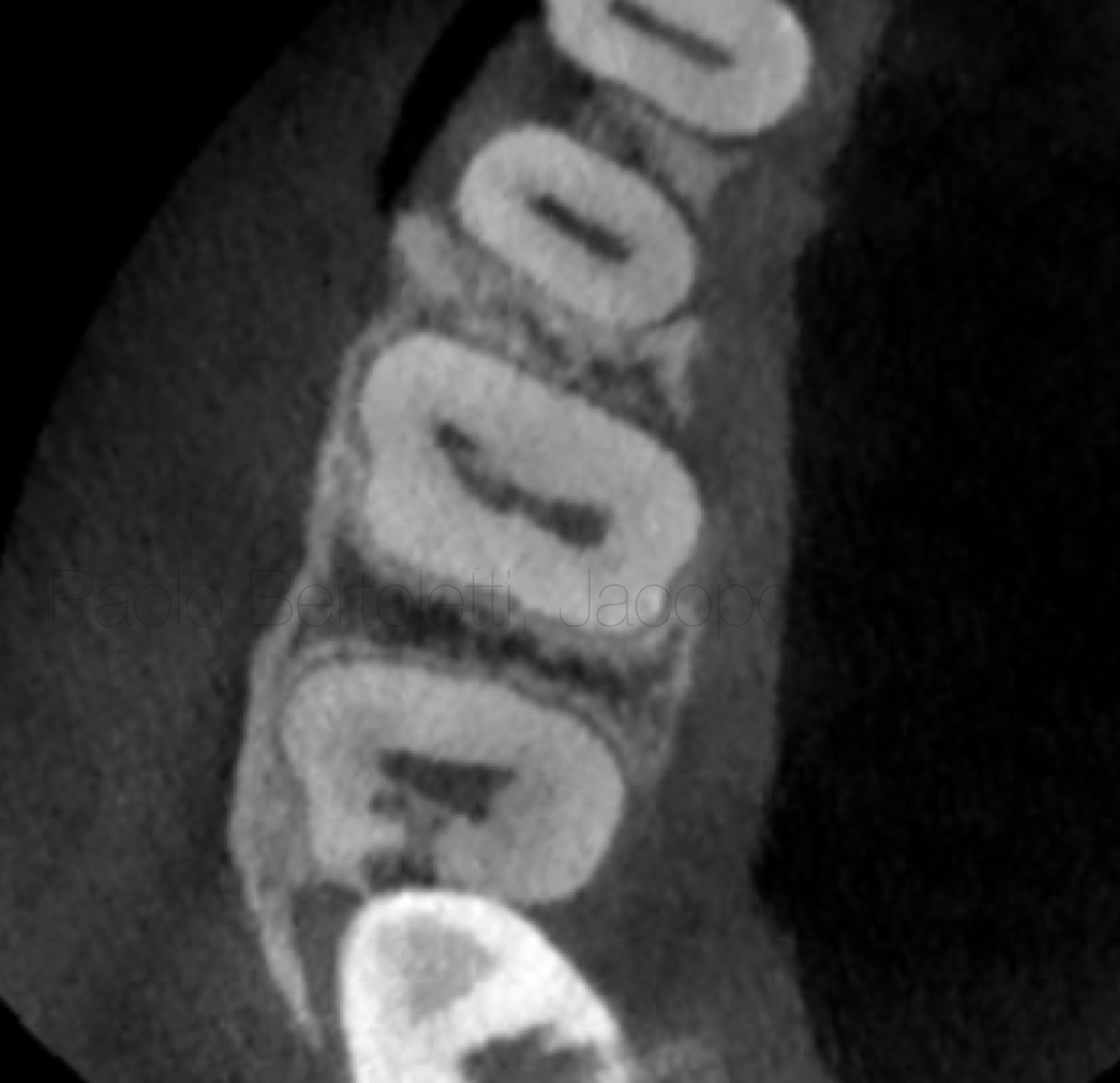
Fig. 4
Initial situation, transverse (horizontal) plane, CBCT
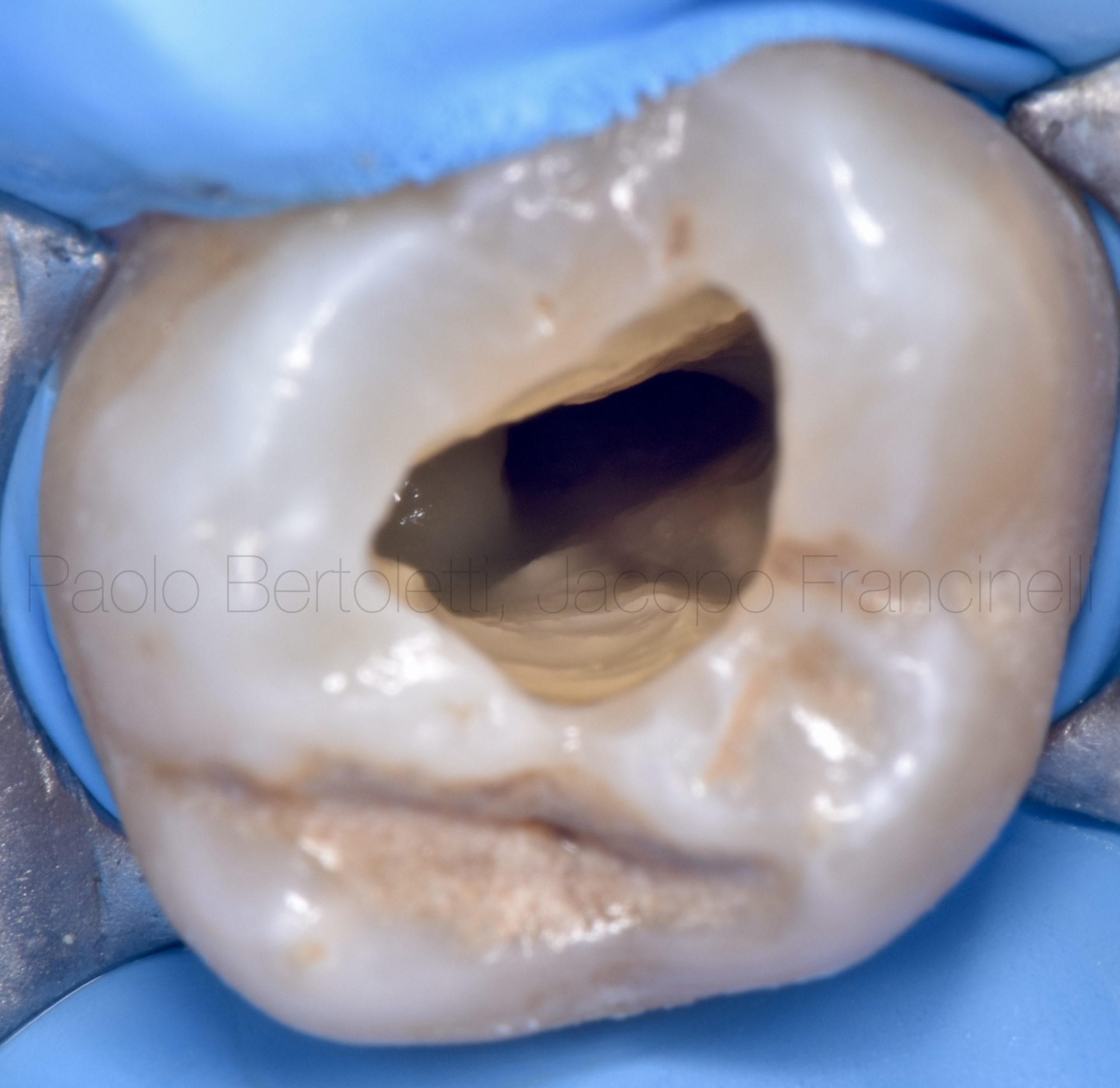
Fig. 5
Access cavity
First the root canal treatment was performed intraorally. After copious irrigation with NaOCl and EDTA, the obturation was done with gutta-percha and bio-ceramic sealer (EndoSequence BC Sealer, Brassler, USA). The tooth was then filled with resine composite.
After that the extraction was carried out, as more atraumatic as possible. The extraoral therapy consisted in the cleaning of the resorption area with a little diamond bur and the filling of the defect with a self-etch and self-adhesive material (Surefil One, Dentsply Sirona, USA). The tooth was held only with sterile gauze and gloves and it was kept wet constantly with sterile saline. The replantation was done less then 15 minutes from the moment of the extraction. The tooth was splint with the one next to it and removed from the occlusion.

Fig. 6
Post-op photo, after root canal treatment, replantation and splint
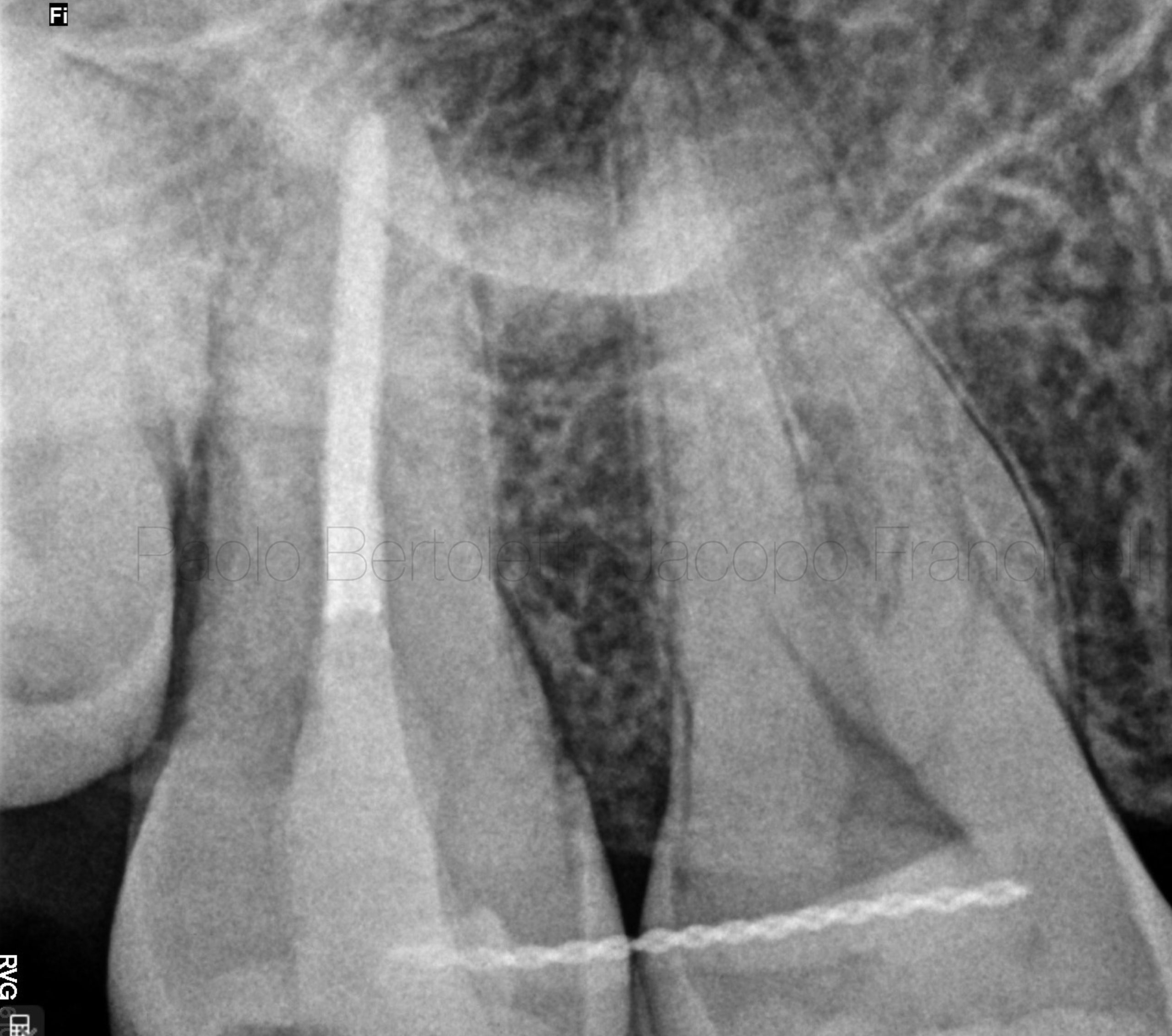
Fig. 7
Post-op x-ray, after root canal treatment, replantation and splint
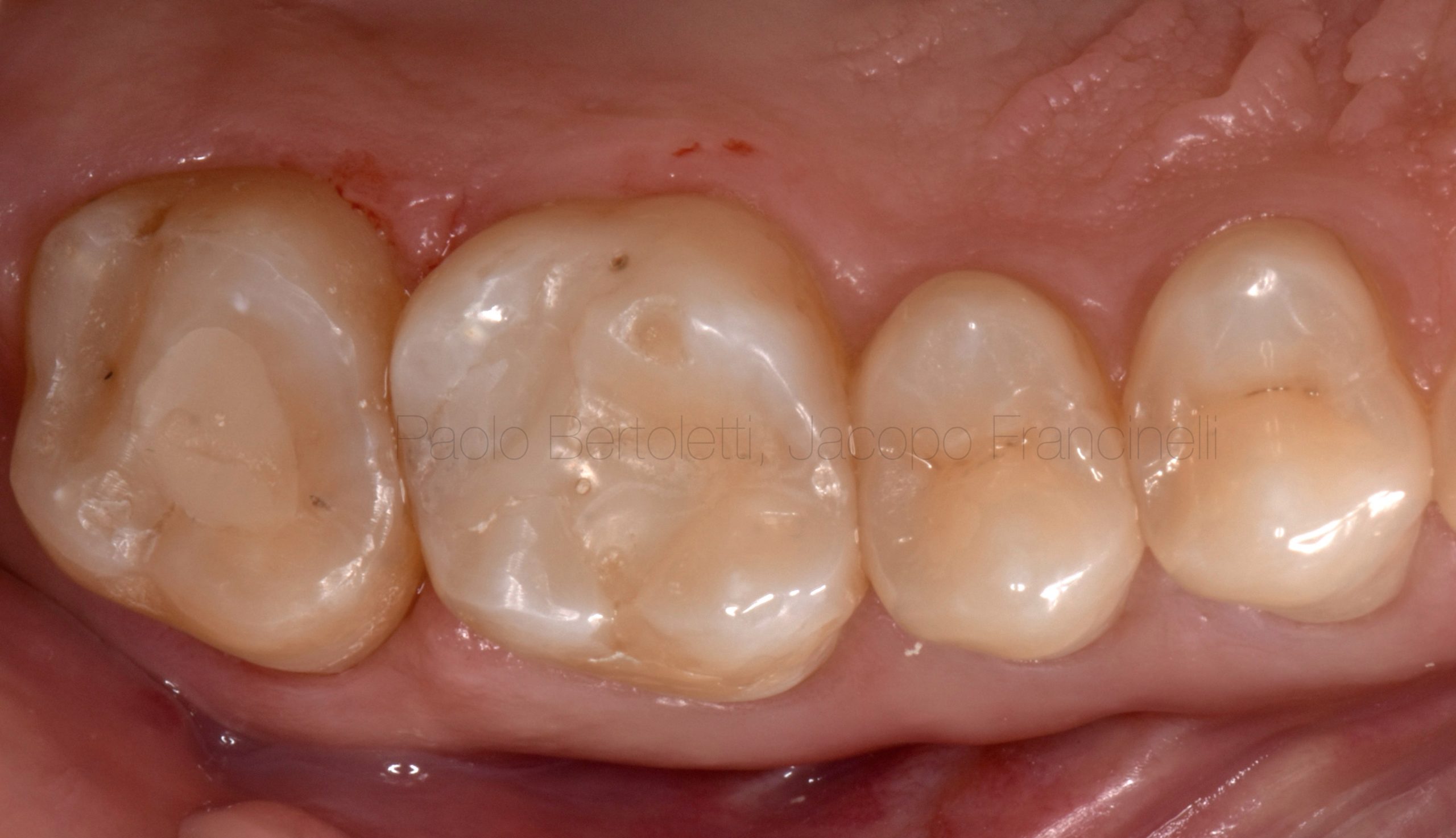
Fig. 8
14 day photo, just after splint removal
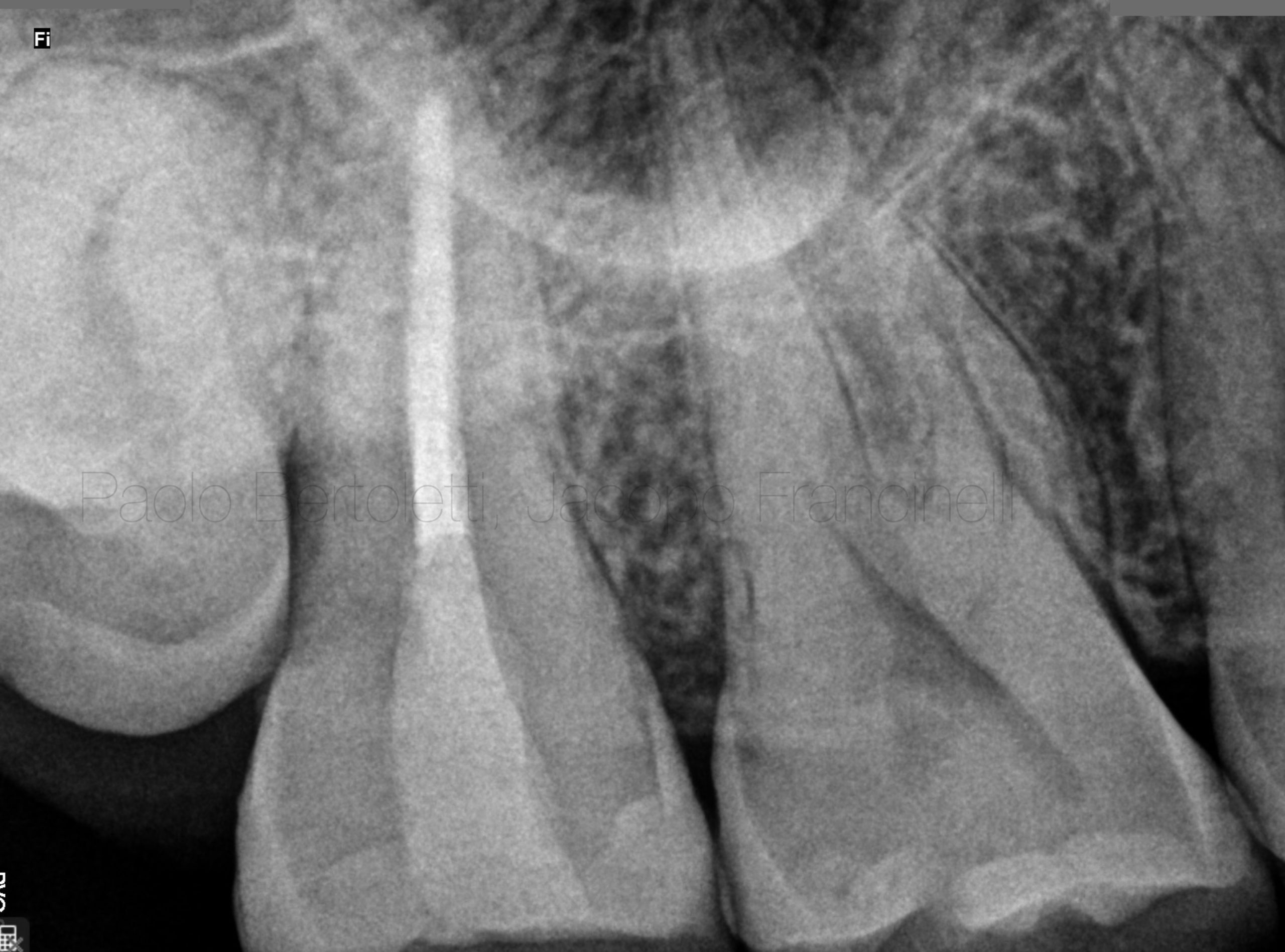
Fig. 9
At the 3 months follow-up, there were no signs or symptoms so it was decided to proceed with a comopsite overlay.
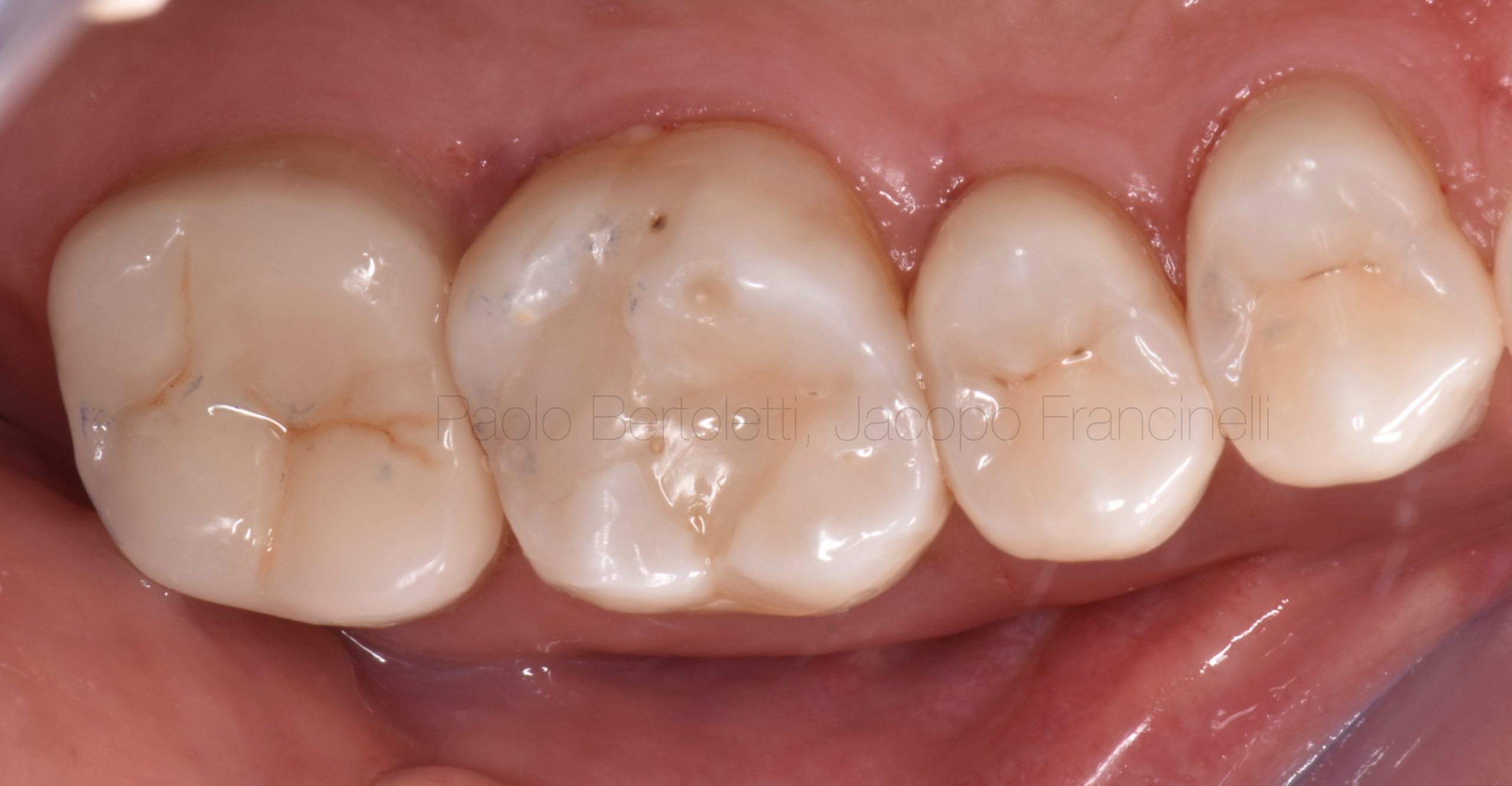
Fig. 10
3 months follow-up, photo after overlay cementation
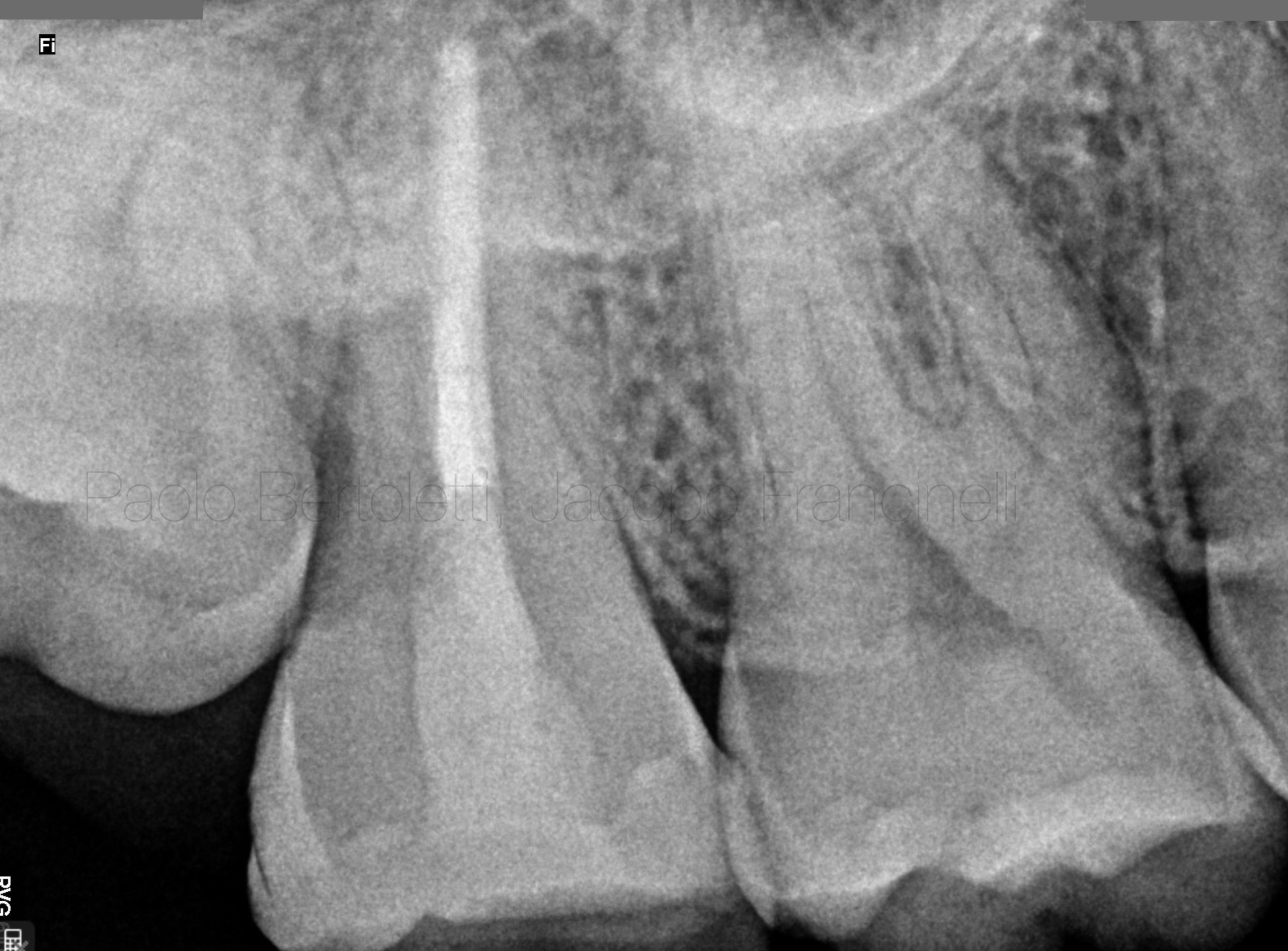
Fig. 11
6 months follow-up, X-ray
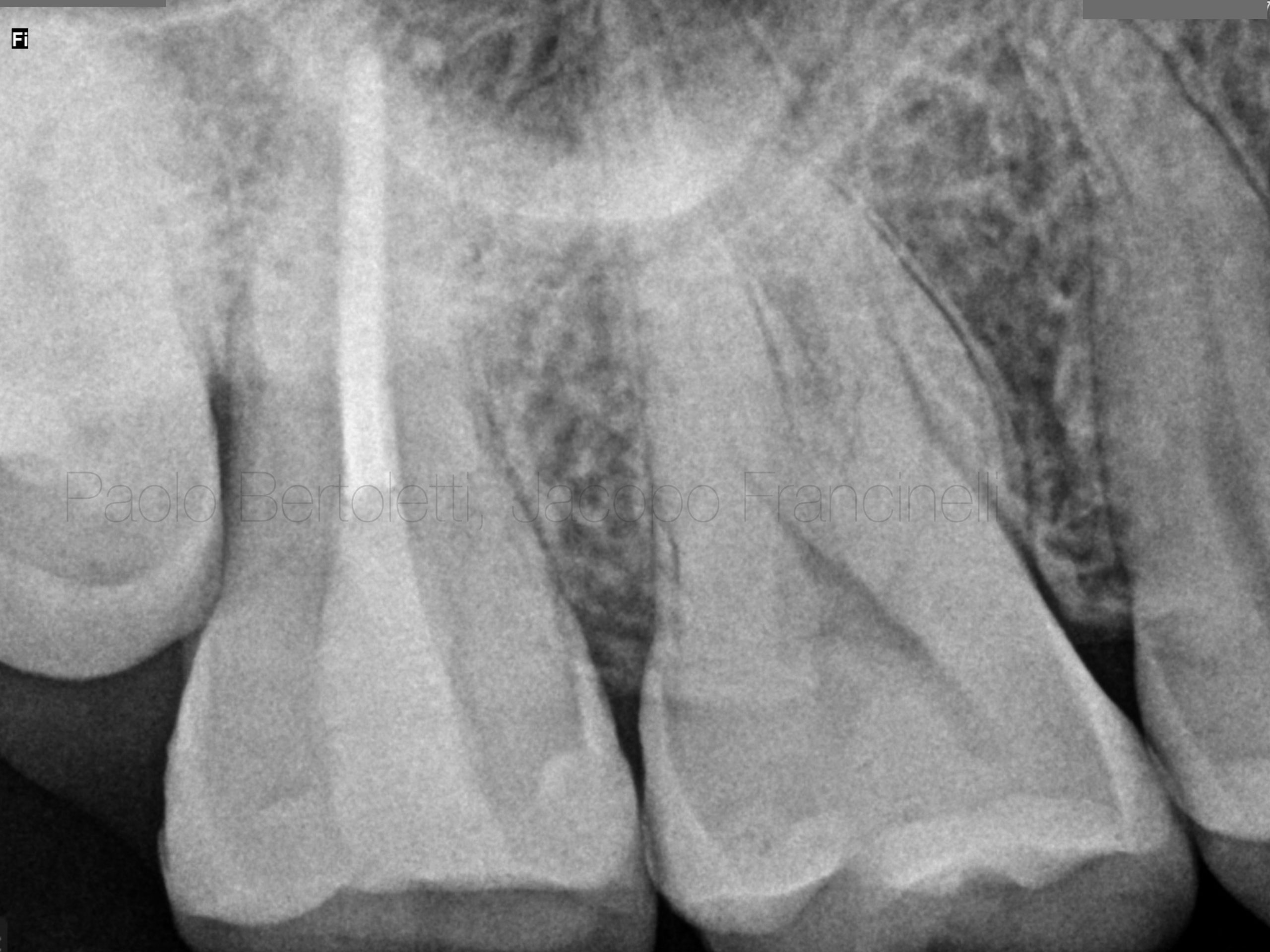
Fig. 12
1 year follow-up, X-ray
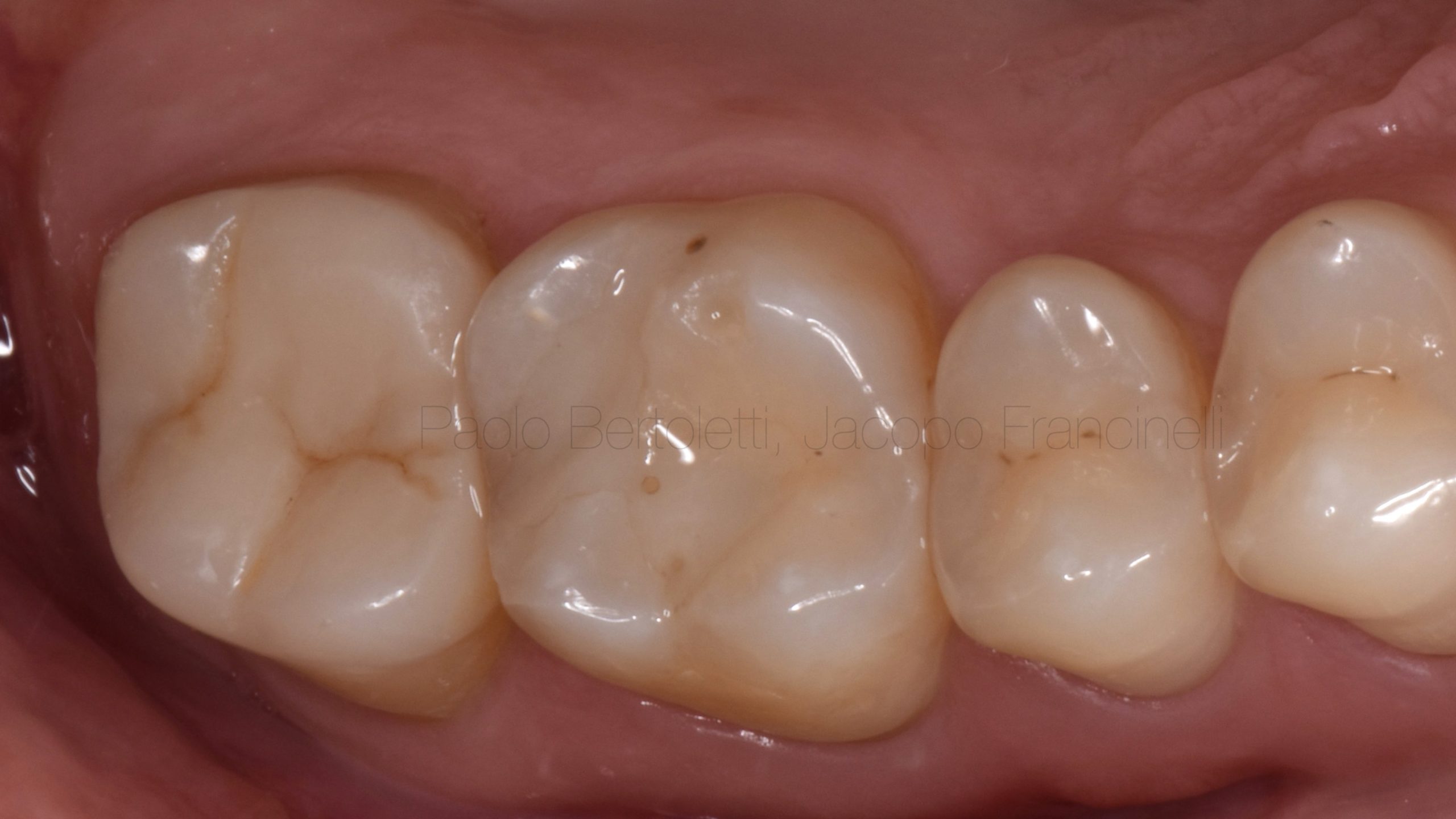
Fig. 13
1 year follow-up, photo

Fig. 14
The author: Paolo Bertoletti
- Degree with honors in Brescia in 2019
- From 2020 he is clinical tutor in the 3rd year of Dentistry alongside Prof. Salgarello
- From 2020 member of the Italian society of endodontic (SIE)
- 2021 2nd level post-graduate Master in Clinical and Microsurgical Endodontics at the University of Brescia with full marks and honors
- From 2022 he is tutor for the aforementioned University Master
- From 2022 contract professor for the University of Brescia
- He collaborates with the Spedali Civili of Brescia as a freelancer
- He has published articles in national and international journals

Fig. 15
The author: Dr Jacopo Francinelli
- Degree with honors in Brescia in 2018
- 2020 2nd level post-graduate Master in Clinical and Microsurgical Endodontics at the University of Brescia with full marks and honors
- from 2019 he is clinical tutor in the 3rd year of Dentistry alongside Prof. Salgarello
- from 2021 he is tutor for the aforementioned university master
- He collaborates with the Spedali Civili of Brescia as a freelancer
- He has published articles in national and international journals- Contract professor for the University of Brescia
- Member of the Italian Academy of Microscopic Dentistry (AIOM) and Italian society of endodontic (SIE)
- Collaborate with colleagues in some private courses focused on endodontics
- He carries out his freelance activity in the province of Brescia dedicating himself mainly to micro- endodontics
Conclusions
ECR are always a challenge for the clinician. In some cases, the standard procedures are difficult to implement. Intentional replantation after treating the tooth extra orally could be an option, in case where is feasible, to improve the prognosis of a tooth that otherwise would be hopeless.
Bibliography
PATEL, S. et al. External cervical resorption: a three-dimensional classification Int Endod J, p. 206-14, July 2017
2 PLOTINO, G. et al. European Society of Endodontology position statement: Surgical extrusion, intentional replantation and tooth autotransplantation Int Endod J, p. 655-659, Jan 2021
3 PATEL, S. et al. European Society of Endodontology Position Statement: External Cervical Resorption Int Endod J, p. 1323-1326, Sept 2018
4 BECKER, B. D. Intentional Replantation Techniques: A Critical Review J Endod, Jan 2018
5 PLOTINO, G. et al. Clinical procedures and outcome of surgical extrusion, intentional replantation and tooth autotransplantation – a narrative review Int Endod J, p. 1636-1652, Sep 2020
6 CHANIOTIS, A.; KOUIMTZIS, T H Intentional replantation and Biodentine root reconstruction. A case report with 10-year follow-up Int Endod J, p. 988-1000, Jan 2021
